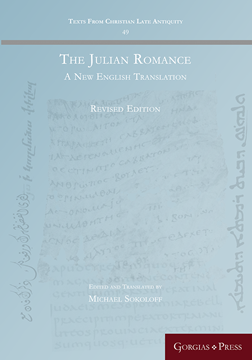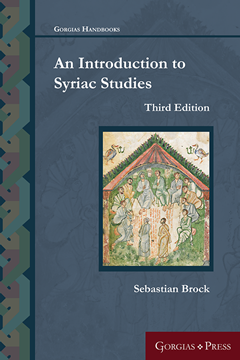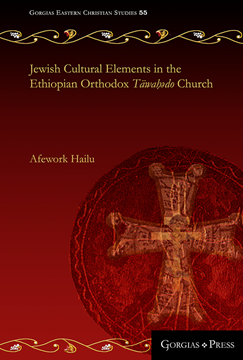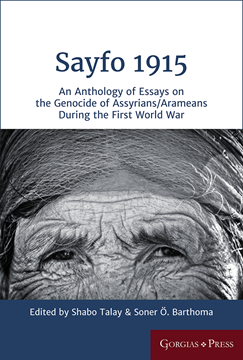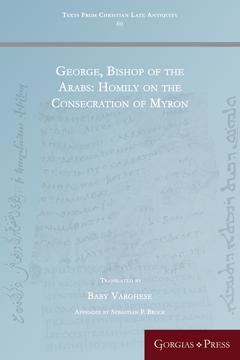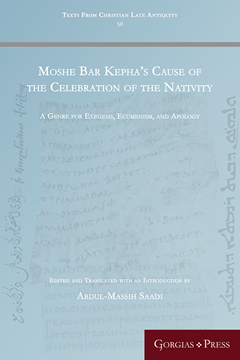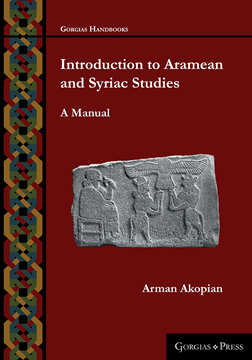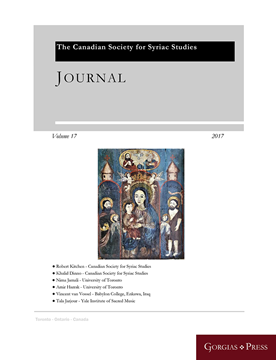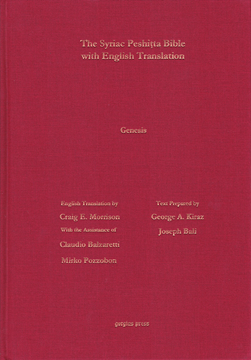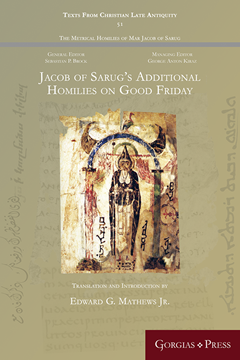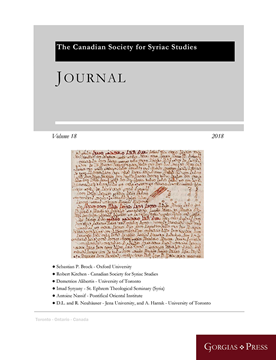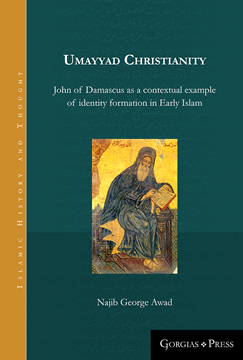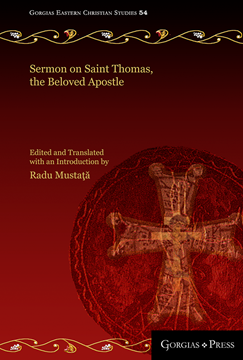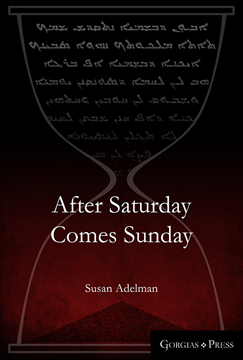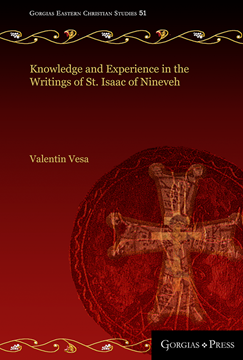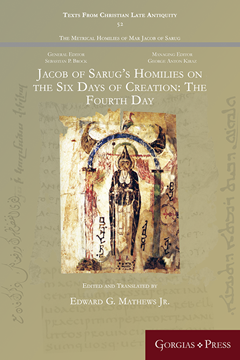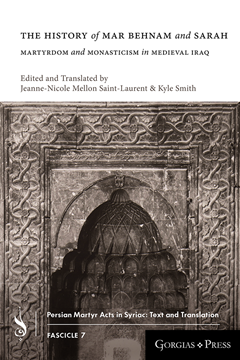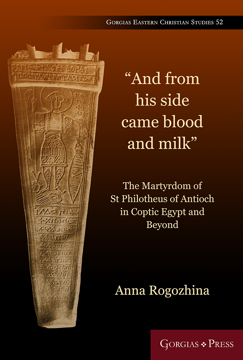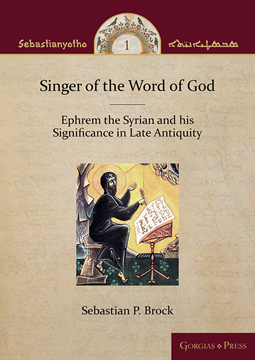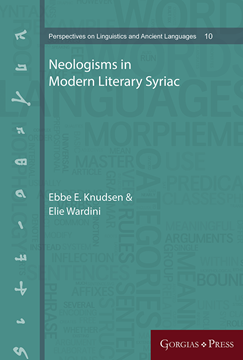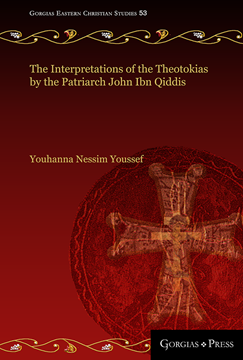The Julian Romance (revised)
A New English Translation
Edited and Translated by Michael Sokoloff
Series: Texts from Christian Late Antiquity 49
ISBN: 978-1-4632-0708-3
The so-called "Julian Romance" was discovered among the Nitrian manuscripts in the 1830s. This revised edition, with facing Syriac text and English translation, provides a new, more accurate translation of this important Syriac text.
$107.00 (USD)
An Introduction to Syriac Studies (Third Edition)
Series: Gorgias Handbooks
ISBN: 978-1-4632-0713-7
This Introduction aims to provide basic guidance to important areas of Syriac studies. The relevance of Syriac studies to a variety of other fields is explored. A brief orientation to the history of Syriac literature is offered, and Syriac is set within the context of the other Aramaic dialects. A thorough discussion on important tools (Instrumenta Studiorum) is presented; topics include grammars, dictionaries, the Bible in Syriac, histories of Syriac literature, bibliographical aids and relevant series, periodicals, and encyclopedias. This Introduction should prove useful both for the student beginning Syriac studies and for scholars working in adjacent fields.
$39.00 (USD)
Jewish Cultural Elements in the Ethiopian Orthodox Täwaḥədo Church
Series: Gorgias Eastern Christian Studies 55
ISBN: 978-1-4632-0717-5
This monograph traces how ‘Jewish’ elements were introduced into and disseminated throughout the Ethiopian Orthodox Täwaḥədo Church through a series of multi-layered, socio-politico-cultural processes. Drawing on historical and literary evidence, Afework tracks the incorporation of Jewish features into the Ethiopian Orthodox Church from pre-Aksumite Christianity, before the fourth century, through the sixteenth century.
$118.00 (USD)
Sayfo 1915
An Anthology of Essays on the Genocide of Assyrians/Arameans during the First World War
Edited by Shabo Talay & Soner Ö. Barthoma
Series: Gorgias Eastern Christian Studies 50
ISBN: 978-1-4632-0730-4
Drawing on the expertise of scholars from a variety of backgrounds, this anthology specifically seeks to shed light on this genocide from a multidisciplinary perspective and serve as a step for developing the future scholarship about the Sayfo.
$95.00 (USD)
George, Bishop of the Arabs
Homily on the Consecration of Myron
Translated by Fr. Baby Varghese
Series: Texts from Christian Late Antiquity 60
ISBN: 978-1-4632-0731-1
George was one of the last scholarly Syrian Orthodox bishops to live in the early Islamic period. His metrical homily, probably composed to be sung during the consecration of the Myron, is presented here with the vocalised Syriac text and English translation on facing pages.
$35.00 (USD) $28.00 (USD)
Moshe Bar Kepha’s Cause of the Celebration of the Nativity
A Genre for Exegesis, Ecumenism, and Apology
Edited and Translated with an Introduction by Abdul-Massih Saadi
Series: Texts from Christian Late Antiquity 50
ISBN: 978-1-4632-0733-5
This book is a part of series of Causes of Celebrations written by Moshe Bar Kepha (813-903). These Causes are unique in that they demonstrate a new genre of the Syriac literature initiated by the East Syriac authors at the beginning of the sixth century. Moreover, these Causes reveal the appreciation and dependency of Moshe Bar Kepha on the East Syriac sources despite the ecclesiastical doctrinal separation between the East Syriac and West Syriac churches.
$39.00 (USD)
Introduction to Aramean and Syriac Studies
A manual
Series: Gorgias Handbooks 39
ISBN: 978-1-4632-0738-0
An English translation of Arman Akopian's comprehensive Introduction to Aramean and Syriac Studies, from the earliest appearances of Arameans in the historical record, through to the modern day.
$119.00 (USD)
Journal of the Canadian Society for Syriac Studies 17
Edited by Amir Harrak
ISBN: 978-1-4632-0740-3
A refereed journal published annually by the Canadian Society for Syriac Studies. This volume includes articles by Robert Kitchen, Khalid Dinno, Nima Jamali, Amir Harrak, Vincent van Vossel and Tala Jarjour.
$75.00 (USD)
Genesis According to the Syriac Peshitta Version with English Translation
Series: Surath Kthob 1
ISBN: 978-1-4632-0741-0
This volume is part of a series of English translations of the Syriac Peshitta along with the Syriac text carried out by an international team of scholars.
$150.00 (USD)
Jacob of Sarug's Additional Homilies on Good Friday
Translation and Introduction by Edward G Mathews Jr
Series: Texts from Christian Late Antiquity 51
ISBN: 978-1-4632-0752-6
Two homilies by Jacob of Sarug on Good Friday, one of which has only survived in Armenian translation.
$49.50 (USD)
Journal of the Canadian Society for Syriac Studies 18
ISBN: 978-1-4632-0756-4
A refereed journal published annually by the Canadian Society for Syriac Studies.
$75.00 (USD)
Umayyad Christianity
John of Damascus as a contextual example of identity formation in Early Islam
Series: Islamic History and Thought 12
ISBN: 978-1-4632-0757-1
A study of the identity-formation process that the Christians of Syria-Palestine experienced during the Umayyad Caliphate. It approaches this subject by using John of Damascus and his writings on Islam as a case-study. This provides an exhaustive study of the available historical data in order to stimulate some further thought on John of Damascus’s theology and legacy from a contextual and intercultural methodology. Such an examination has not yet been pursued in the scholarship of Byzantine Christianity during that era. Proceeding from a centralizing ‘context’, the monograph revisits John of Damascus’s legacy (and the Umayyad Christians’ identity-formation of that era) from the perspective of his historical, Islamic-Arabic context, and not from any assumed, metanarrative, common to contemporary pro-Byzantine theology scholars.
$114.95 (USD)
Hugoye - Journal of Syriac Studies (volume 19)
2016
General Editor George Anton Kiraz
Series: Hugoye: Journal of Syriac Studies 19
ISBN: 978-1-4632-3901-5
Widely regarded as a premier journal dedicated to the study of Syriac, Hugoye: Journal of Syriac Studies was established in 1998 as a venue devoted exclusively to the discipline. An organ of Beth Mardutho, the Syriac Institute, the journal appears semi-annually and will be printed in annual editions. A peer-reviewed journal, Hugoye is a respected academic source for up-to-date information about the state of Syriac studies and for discovering what is going on in the field. Contributors include some of the most respected names in the world of Syriac today.
$75.00 (USD)
Sermon on Saint Thomas, the Beloved Apostle
A Syriac Catholic Panegyric from Seventeenth Century Malabar
Translation and Introduction by Radu Mustaţă
Series: Gorgias Eastern Christian Studies 54
ISBN: 978-1-4632-3902-2
A study of a homily in praise of Saint Thomas, written in Syriac by a Catholic missionary. The homily, which is preserved in two manuscripts, is an important witness to the interaction between the Indian Syrian Christians and the Western Catholic missionaries.
$78.65 (USD)
After Saturday Comes Sunday
ISBN: 978-1-4632-3904-6
Starting with the biographical story of a 92 year old Chaldean woman from northern Iraq and a biography of a Kurdish Jewish woman now living in Israel, Adelman writes about the history of Christians and Jews in the Middle East. Their languages, dialects of the 3000 year old Aramaic language, are under threat, and their homelands continuously threatened by war.
$35.00 (USD)
Knowledge and Experience in the Writings of St. Isaac of Nineveh
Series: Gorgias Eastern Christian Studies 51
ISBN: 978-1-4632-3905-3
One of the most popular monastic authors with a nearly universal spread over time is Isaac of Nineveh, a mystic of the late 7th century, who belonged to the East Syriac Church. This book is dedicated to the doctrine of knowledge, as described in Isaac of Nineveh’s discourses, in its double dimension, worldly/philosophical and theological (the former considered to be more discursive/intellectual and the latter intuitive/ experiential) and the rapport established between these two, prolonged in the concept of vision, as the highest form of spiritual experience.
$114.95 (USD)
Hugoye - Journal of Syriac Studies (volume 20)
2017
General Editor George Anton Kiraz
Series: Hugoye: Journal of Syriac Studies 20
ISBN: 978-1-4632-3906-0
Widely regarded as a premier journal dedicated to the study of Syriac, Hugoye: Journal of Syriac Studies was established in 1998 as a venue devoted exclusively to the discipline. An organ of Beth Mardutho, the Syriac Institute, the journal appears semi-annually and will be printed in annual editions. A peer-reviewed journal, Hugoye is a respected academic source for up-to-date information about the state of Syriac studies and for discovering what is going on in the field. Contributors include some of the most respected names in the world of Syriac today.
$75.00 (USD)
Jacob of Sarug’s Homilies on the Six Days of Creation (The Fourth Day)
The Fourth Day
Edited and Translated by Edward G Mathews Jr
Series: Texts from Christian Late Antiquity 52
ISBN: 978-1-4632-3912-1
In this fourth installment of the long Homily 71, On the Six Days of Creation, Jacob treats of the events of the fourth day, the creation of the spheres of light over the earth: the sun to rule over the day, and the moon and the stars to rule over the night.
$38.50 (USD)
The History of Mar Behnam and Sarah
Martyrdom and Monasticism in Medieval Iraq
Edited and Translated by Jeanne-Nicole Mellon Saint-Laurent & Kyle Smith
ISBN: 978-1-4632-3914-5
The History of Mar Behnam and Sarah tells the story of two siblings who convert to Christianity under the tutelage of Mar Mattai, a monastic leader and wonderworker from the Roman Empire. In this volume, Jeanne-Nicole Mellon Saint-Laurent and Kyle Smith provide the first critical edition and English translation of this fascinating martyrdom narrative.
$69.00 (USD)
"And from his side came blood and milk"
The Martyrdom of St Philotheus of Antioch in Coptic Egypt and Beyond
Series: Gorgias Eastern Christian Studies 52
ISBN: 978-1-4632-3916-9
This book examines the function and development of the cult of saints in Coptic Egypt, focusing primarily on the material provided by the texts forming the Coptic hagiographical tradition of the early Christian martyr Philotheus of Antioch, and more specifically, the Martyrdom of St Philotheus of Antioch (Pierpont Morgan M583). This Martyrdom is a reflection of a once flourishing cult which is attested in Egypt by rich textual and material evidence. This text enjoyed great popularity not only in Egypt, but also in other countries of the Christian East, since his dossier includes texts in Coptic, Georgian, Ethiopic, and Arabic.
$114.95 (USD)
Missionary Life in Persia
Being glimpses at a quarter of a century of labors among the Nestorian Christians
By Justin Perkins; Introduction by John Pierre Ameer
Series: Kiraz Historic Travels Archive 32
ISBN: 978-1-4632-3921-3
An account by the American missionary, Justin Perkins, of his years living among the Christians of Persia, with a new Introduction by John Ameer, setting the activities and experiences of the American missionaries in Persia in their historical context.
$78.65 (USD)
Singer of the Word of God
Ephrem the Syrian and his Significance in Late Antiquity
Series: Sebastianyotho 1
ISBN: 978-1-4632-3922-0
As the first volume of the Sebastianyotho series, this book collects Sebastian P. Brock’s articles related to Ephrem the Syrian.
$179.00 (USD)
The Commentary of Gabriel of Qatar on the East Syriac Morning Service on Ordinary Days
Text, Translation, and Discussion
Series: Texts from Christian Late Antiquity 53
ISBN: 978-1-4632-3924-4
This volume provides a study and an original edition and translation from Syriac into English of Discourse Two of Gabriel of Qatar's liturgical commentary, written in the first half of the seventh century.
$96.80 (USD)
Neologisms in Modern Literary Syriac
ISBN: 978-1-4632-3936-7
This book is the culmination of the Turabdin Project, the goal of which is to monitor the development of Modern Literary Syriac from the 1980s to the present. The approach is descriptive and contrastive relative to the Classical language, significant differences between Modern Literary Syriac and Classical Syriac are noted. The main focus is on neologisms and new developments in the lexicon.
$114.95 (USD)
The Interpretations of the Theotokias by the Patriarch John ibn Qiddis
Series: Gorgias Eastern Christian Studies 53
ISBN: 978-1-4632-3948-0
The theotokias are prayers dedicated to the Virgin Mary, the Mother of God (Theotokos). In the early fourteenth century, the Patriarch of the Coptic Church, Ibn Qiddis, composed and paraphrased – in Coptic – the Theotokias. His work has only survived in a single manuscript. This book introduces the author, John Ibn Qiddis, his liturgical, pastoral, and literary activities, and the Coptic language of his time, followed by the texts and an English translation.
$135.00 (USD) $108.00 (USD)
